
From the moment Lima was founded by the Spanish in 1535, it was a major city and grew steadily. Thanks particularly to the harbour that connected the new colony to Spain. But since 1940, Lima’s growth has been really explosive, with countless migrants moving from the Andes to the city in search of work. This flow of migrants increased in the 1980s and 90s as farmers fled the violence of the Shining Path guerrillas in the rural areas.
In less than half a century, the city’s population increased by a factor of fourteen. With 10 million inhabitants, Lima is the biggest city in Latin America after Mexico City and Sao Paulo. And each year, 15 thousand new inhabitants arrive.
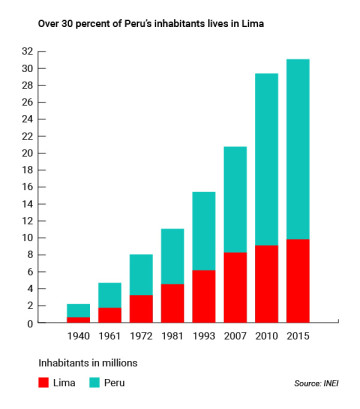
Pueblos jovenes are the new neighbourhoods on the fringes of Lima; built by migrants with their own hands and tacked more or less at random onto the northern and southern edges of the city.
The city’s administration had no idea what to do about this stream of migrants flowing into the city from 1940 onwards. Because of the lack of homes, especially for poor migrants – investment companies and banks focused on houses for the middle and higher incomes – these newcomers occupied pieces of waste land around the edges of city, building houses and setting up basic infrastructure themselves.
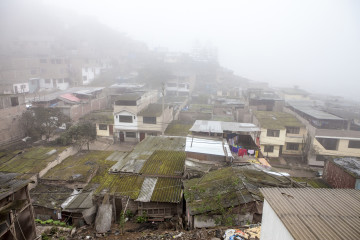
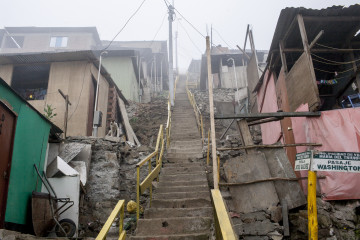
Families improve their homes themselves as best they can as their financial resources improve. In many pueblos jovenes, the government has installed basic amenities such as lighting and electricity. Usually at election time, when candidates sometimes literally negotiate about votes with residents or real estate brokers.
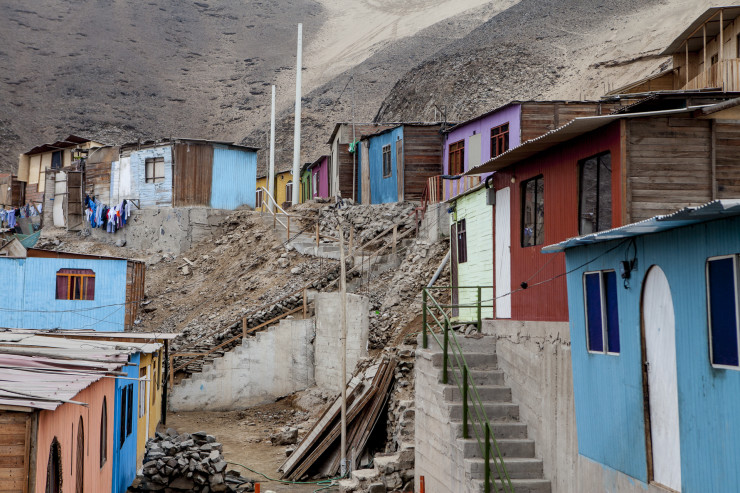
Living in a pueblo joven is a three-stage journey to relative prosperity: you start off in a house made from corrugated iron and plastic, then build a wooden house and then, if all goes well, you can replace this with brick.
For a long time, there was a very laissez-faire approach to urban management in Lima. The government was happy not to have to deal with housing for all these poor migrants. Since 1961, it has been officially permitted to occupy a piece of desert on the periphery of Lima and build a residential neighbourhood.
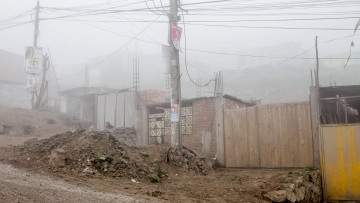
Nevertheless, it is still a risky business. A thriving trade in land has grown up – there are small real estate offices all over the city run by brokers offering a piece of Lima for sale. Now, no one knows exactly who owns what anymore, or where you can and cannot build. Many residents enter into negotiations with the government for title deeds. But you have to be very careful; no one leaves his house unattended, even for a short holiday. Everyone knows the stories of people coming home and finding another family in their home. Just try getting your house back when it’s built on a piece of ground that is officially no man’s land.
No, every big city has its slums or favelas where the residents are in charge, rather than the government. The only difference here is that the Peruvian government has intervened in the relocation of migrants even less than has happened in other large South American cities, leading to huge do-it-yourself neighbourhoods hugging almost the entire periphery of Lima.
Since the 1990s, the residents have even taken care of transport themselves. In an attempt to stimulate employment, President Fujimori liberalised the transport sector. Everyone who was willing and able could give rides to fellow citizens. Which turned out to be both a blessing and a curse: the number of busses increased from 10 to 50 thousand and Lima became one of the most polluted cities on the continent. But transport was available everywhere and anywhere – and it is still the case that no one in Lima need walk more than 500 metres for a bus or a motorcycle taxi. Everyone had access to work, education and health care. One of the consequences of this is that a record number of people have been able to achieve a middle class lifestyle in a very short time.
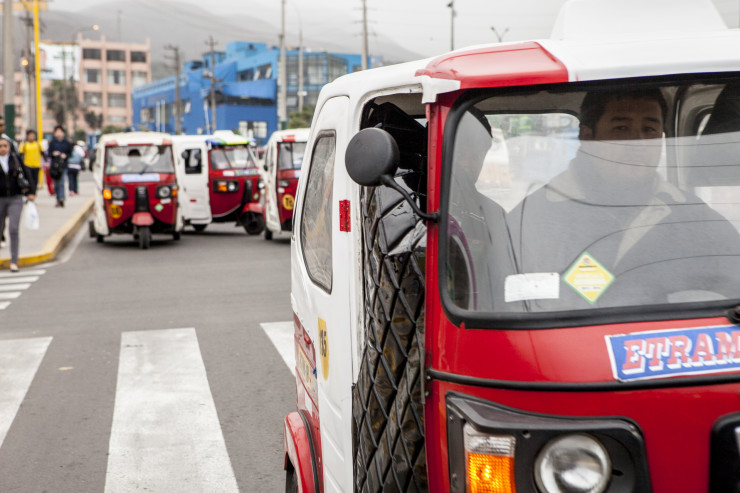
Mototaxi’s are the most populair transport in Lima’s mountainous suburbs.
There is still a serious shortage of cheap homes to rent and buy in Lima. So anyone arriving without much money is still forced to tack his do-it-yourself house onto the edge of the city. In the Pachacutec neighbourhood, it is estimated that some 40 families do this every day. The problems in these neighbourhoods are massive: some 110 thousand homes are at serious risk of collapse and some 2 million Limeños have no access to the water mains, relying instead on water tanks – which is ten to fifteen times more expensive.
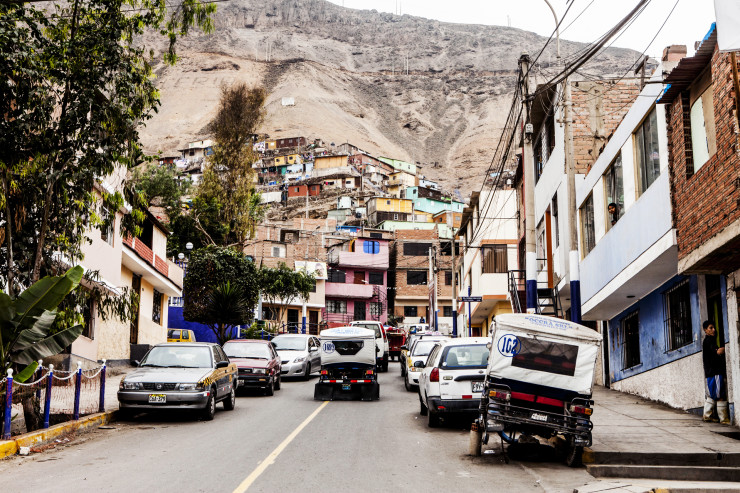 The original pueblos jovenes are now transforming from slums into suburbs. Thanks to the economic growth and a left-leaning government, Peru has managed to help a quarter of its poor population achieve a middle-class income in a very short time. Small migrant stores have flourished into blossoming businesses and the do-it-yourself houses are being replaced by proper apartments. Mega Plaza and Royal Plaza are the biggest shopping malls on the continent and are just like luxury retail parks in the rest of the world – they even have metro links to the city centre. The only difference is the location: in Los Olivos, a former slum.
The original pueblos jovenes are now transforming from slums into suburbs. Thanks to the economic growth and a left-leaning government, Peru has managed to help a quarter of its poor population achieve a middle-class income in a very short time. Small migrant stores have flourished into blossoming businesses and the do-it-yourself houses are being replaced by proper apartments. Mega Plaza and Royal Plaza are the biggest shopping malls on the continent and are just like luxury retail parks in the rest of the world – they even have metro links to the city centre. The only difference is the location: in Los Olivos, a former slum.